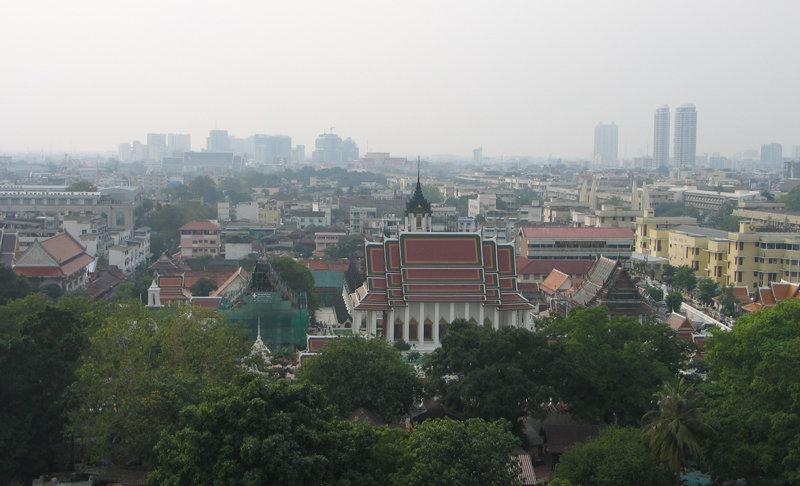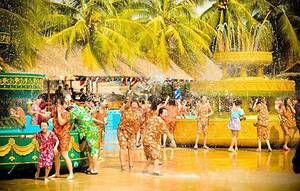Discover Bangkok: 5-Day Itinerary
2 cities |
14 attraction(s) |
total distance 185
km
 TIPS
TIPS
Day1
Day2
Day3
Day4
Day5
Day1: Bangkok
3 attraction(s) ·
2 km
1
Built in 1782, this ornate royal palace complex now houses a museum & is open to visitors.
1
km
2
Wat Pho, also known as the Temple of the Reclining Buddha, is located near the Grand Palace in Bangkok. Built in 1788, it is one of the oldest and largest temples in Thailand. The temple is divided into the main temple area and the monastery area, and visitors can explore the main temple area. This area is further divided into the main hall area and the stupa courtyard area, with one of the highlights being the giant reclining Buddha statue inside the main hall. The statue is 46 meters long and 15 meters high, making it one of the iconic landmarks of Wat Pho and a popular spot for photography. The statue is adorned with exquisite mother-of-pearl inlays and 108 auspicious symbols, as well as beautiful murals and gold leaf designs on the windows. Along the corridor, there is also a row of 108 monk bowls where visitors can make offerings with coins and make wishes. Wat Pho is also the earliest university in Thailand, with a heritage in medicine and traditional Thai massage. It has undergone two reconstructions and has a long history. Thai culture has been influenced by China, so one can see the presence of Chinese elements in the architecture and sculptures of the temple. Even after the reconstruction, Wat Pho continues to attract many visitors from around the world.
1
km
3
Monumental Buddhist temple right on the river, with an iconic, ornately tiled central prang (spire).
Day2: Bangkok
3 attraction(s) ·
12 km
1
Massive market with over 15,000 stalls offering an eclectic variety of goods, from antiques to pets.
7
km
2
Thai-style teak house by American entrepreneur Jim Thompson with an art collection & guided tours.
6
km
3
Illuminated at night, this sizable Ferris wheel in an open-air mall offers scenic river views.
Day3: Bangkok
2 attraction(s) ·
2 km
1
The Golden Mount is located on an artificial hill in the Bangkapi District of Bangkok. It was built by King Rama I in the 19th century and later renovated by King Rama II. King Rama IV added the Golden Mount and the mountain path leading directly to the top. King Rama V completed the final pagoda at the top, which houses a collection of royal teeth relics. From the summit, one can overlook the cityscape of Bangkok. The temple also offers scenic views, with a height of 78 meters.
Inside the temple, there is the largest bronze Buddha statue in Thailand and the relic of Lord Buddha's ashes. Surrounding the pagoda at the top is a circular walkway where one can enjoy the panoramic view of the entire Bangkok area. Although the temple does not have a large Buddha statue, there are numerous small ones. If you wish to climb the temple, a voluntary donation of 10 baht per person is required.
Entering through the main gate to the top of the hill, you will see artificial hills, flowing water, flowers, and small scenic spots. There are also many small pagodas, tombs, ash burial niches, and inscriptions along the mountain and on the way down, possibly for the convenience of funeral rituals. To experience the cultural diversity of different temples, visit the Golden Mount.
2
km
2
Khao San Road has always been a favorite place for backpackers. It is close to many tourist attractions, such as the Grand Palace, National Museum, and Art Galleries. There are numerous bars and unique shops where you can experience the local culture and buy souvenirs. Additionally, the famous Lumphini Night Market, Wholesale Souvenir Market, and open-air Beer Gardens are also located near Khao San Road. The annual Songkran Festival, known as the Water Festival, takes place here and is an important cultural event in Thailand. For budget travelers, almost all ATMs near Khao San Road accept UnionPay cards, and the withdrawal fees for debit cards are relatively low.
Day4: Bangkok
3 attraction(s) ·
10 km
1
The National Museum in Bangkok, Thailand was built in 1782 and is one of the largest national museums in Southeast Asia. The museum houses a wide range of collections, including carvings and classical artworks from various periods in Thailand's history, ranging from the Stone Age to the present day. The collections include puppets and shadow play props, folk tools, ancient Buddha statues, weapons used by the king, and crafts from ancient times to the present. It is worth noting that since 1993, the museum has also started collecting modern artworks.
7
km
2
Central urban park featuring manicured lawns, playgrounds & an artificial lake with boat rentals.
4
km
Day5: Ayutthaya > Bangkok
4 attraction(s) ·
76 km
2
The Zabaykalsky Krai, located in eastern Siberia, is Russia's largest federal subject. It borders Mongolia and China to the south and shares its eastern border with the Amur Oblast. The region is known for its stunning natural landscapes, including Lake Baikal, the world's deepest freshwater lake, and the picturesque landscapes of the Trans-Siberian Railway. With its rich cultural heritage and diverse wildlife, the Zabaykalsky Krai offers visitors a unique and unforgettable travel experience.
4
km
3
Built in 1782, this ornate royal palace complex now houses a museum & is open to visitors.
1
km
4
Wat Arun or the Temple of Dawn is a Buddhist temple located on the west bank of the Chao Phraya River in Bangkok, the capital of Thailand. It was completed in 1809 and underwent renovations in 1847. With its towering main spire reaching 82 meters in height, Wat Arun is known as the "Eiffel Tower of Thailand" and is the largest Mahayana-style pagoda in the country. The temple complex also includes two smaller temples, one of which houses various Buddha statues. Wat Arun is a significant cultural landmark and one of the most visited temples in Bangkok.
































